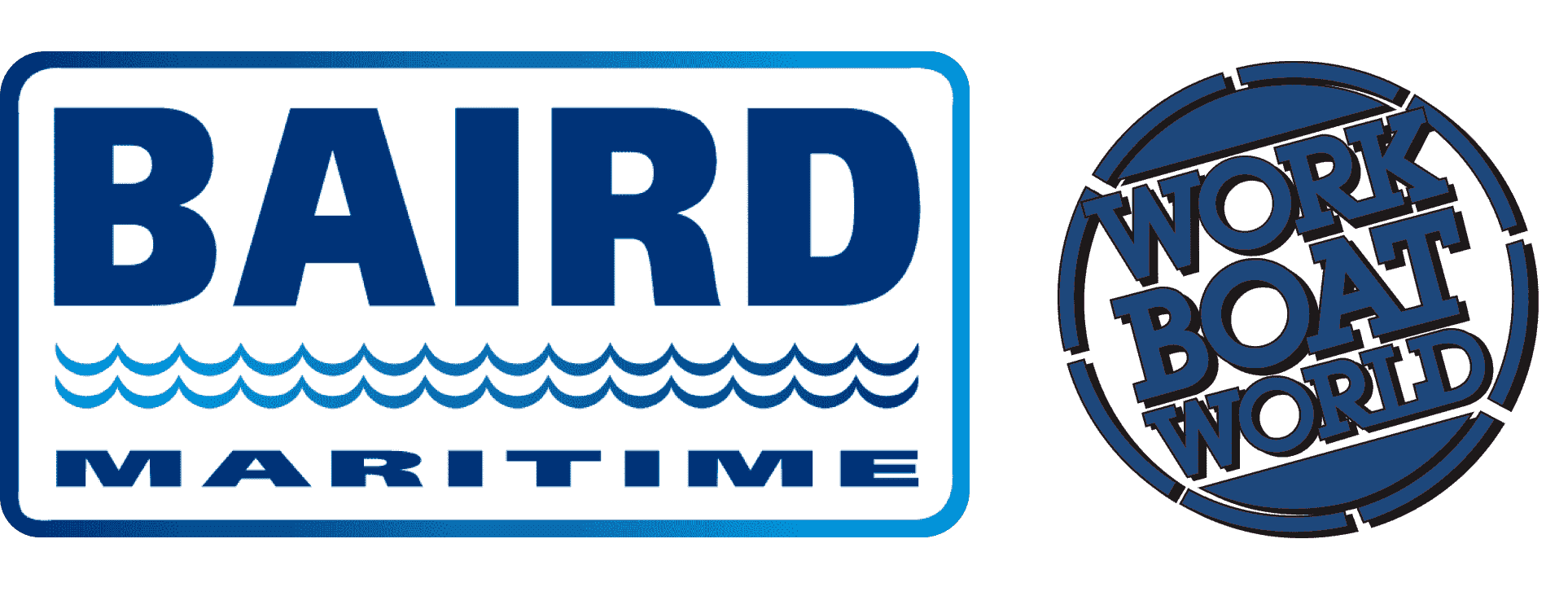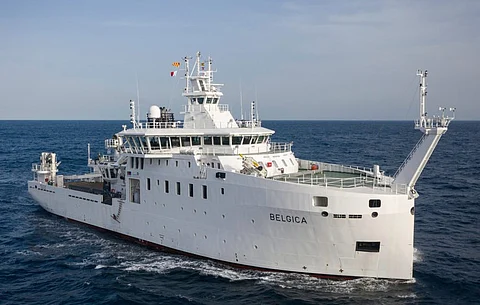VESSEL REVIEW | Belgica – Belgian Navy’s new oceanographic research vessel
The Belgian Navy recently took delivery of a new oceanographic research vessel from Freire Shipyard in Spain.
The vessel, which is named Belgica, is equipped to operate in a variety of fields such as geology and sedimentology, fisheries, biology, chemistry, oceanography, and hydrography. It replaces a similarly named vessel that had been in service for 36 years and was later sold to Ukraine.
Although operated by the Belgian Navy, the vessel remains the property of the Belgian Science Policy Office (BELSPO), the primary scientific advisory body of the country's government. The Royal Belgian Institute of Natural Sciences (RBINS) will remain responsible for the budgetary management of the ship, the scientific instruments, and the programming of the scientific campaigns.
The DNV-classed Belgica has an LOA of 71.4 metres, a beam of 16.8 metres, and a draught of 4.8 metres. It is larger than the vessel it replaces, the 20 metres of added length resulting in a four-fold increase in available space for laboratories. There are eight laboratories suited for a variety of scientific specialties as well as a seismic room, a diver store, and freezer rooms.
Belgica's exploration area covers the North Sea – its primary area of operations, where it will conduct water quality monitoring and data collecting missions – to just above the Arctic Circle, the Atlantic Ocean as far as West Africa, the Mediterranean Sea and the Black Sea. An ice class 1C hull will enable it to safely navigate in the polar regions during the summer months.
The vessel has an autonomy of 30 days and will carry out research for up to 300 days at sea each year. A diesel-electric propulsion system that includes three Anglo Belgian Corporation engines drives two Kongsberg fixed-pitch propellers to deliver a maximum speed of 13 knots and a service speed of 11 knots. Two Kongsberg aft and two bow thrusters are connected to the DP2 system for precise station-keeping while a Hoppe stabilisation system is installed to minimise rolling.
The equipment suite includes multibeam echosounders for use in both shallow and deep waters, sub-bottom profilers, acoustic Doppler current profilers, wideband echosounders, and a fish finding sonar. The equipment enables the vessel to carry out scientific campaigns from the polar to the intertropical zone, and from shallow waters to a depth of 5,000 metres. Some of the equipment can be deployed into the water via two drop keels integrated into the hull bottom.
The vessel is equipped for silent operation, which is essential for fisheries research as well as activities in environmentally sensitive areas. A waste heat recovery system is also installed.
The aft deck can transport a total volume of cargo equivalent to seven 20-foot containers. Hangar space is available for unmanned aerial, surface, and underwater vehicles and a seven-metre workboat/tender to allow the crew to access more restrictive waters for research activities as well as perform water rescues. Launch and recovery systems (LARS) are fitted for use with the tender, though they are versatile enough to facilitate the deployment of nets and other scientific equipment.
The other deck equipment consists of three cranes, an array of winches, T-frames, and an A-frame.
The vessel's permanent crew complement includes three Belgian Navy personnel and eleven civilian mariners from French shipping company Genavir, which is primarily responsible for the management and operation of the specialised vessel. An additional 28 scientists and researchers can be accommodated on board. All personnel are housed in 14 single and 13 double cabins.
Homeported at the naval base in Zeebrugge, Belgica sailed on its maiden operational cruise in late January 2022 in the Mediterranean Sea, where it conducted soil sampling activities over a period of five weeks.
| Belgica | |
| SPECIFICATIONS | |
| Type of vessel: | Oceanographic research vessel |
| Classification: | DNV ✠1A; ICE(1C); SPS; E0; DYNPOS(AUTR); COMF‐V(2); COMF‐C(2); BWM‐T; TMON; Silent‐R; NAUT(AW) |
| Port of registry: | Zeebrugge, Belgium |
| Flag: | Belgium |
| Owner: | Belgian Science Policy Office |
| Operator: | Belgian Navy |
| Builder: | Freire Shipyard, Spain |
| Length overall: | 71.4 metres |
| Length bp: | 68.73 metres |
| Beam: | 16.8 metres |
| Draught: | 4.8 metres |
| Depth: | 5.8 metres |
| Displacement: | 3,870 tonnes |
| Gross tonnage: | 3,722 |
| Net tonnage: | 1,117 |
| Capacity: | 7 x ISO containers |
| Main engines: | 3 x Anglo Belgian Corporation; Indar |
| Propulsion: | 2 x Kongsberg Maritime fixed-pitch propellers |
| Generators: | 3 x Anglo Belgian Corporation, Mitsubishi |
| Side thrusters: | 4 x Kongsberg Maritime |
| Rudders: | 2 x Kongsberg Maritime |
| Maximum speed: | 13 knots |
| Cruising speed: | 11 knots |
| Radars: | Sperry Marine VisionMaster X-band; Sperry Marine VisionMaster S-band |
| Depth sounders: | Skipper; Kongsberg Maritime |
| Dynamic positioning: | Thrustmaster Icon |
| Radio: | Sailor 6222 VHF |
| Satcom: | Intellian |
| Compasses: | Sperry Marine; Hansa V |
| GMDSS: | Sailor 6334C |
| Plotter: | Sperry Marine VisionMaster |
| AIS: | Saab |
| Other electronics: | 2 x Skipper speed logs; 2 x Veripos LD5; Saab; Seapath; Teledyne; Simrad; Sea-Bird Scientific; acoustic Doppler current profilers |
| Winches: | Ibercisa |
| Cranes: | 3 x Heila |
| Other deck equipment: | Ibercisa A-frame; Ibercisa T-frames; Ibercisa LARS |
| Other equipment installed: | Hoppe Marine stabilising system; waste heat recovery system |
| Type of fuel: | Diesel |
| Fuel capacity: | 273.3 cubic metres |
| Freshwater capacity: | 53.7 cubic metres |
| Accommodation: | 14 x single cabins; 13 x double cabins |
| Crew: | 14 |
| Passengers: | 28 |
| Operational area: | North Sea; Mediterranean Sea; Black Sea |


